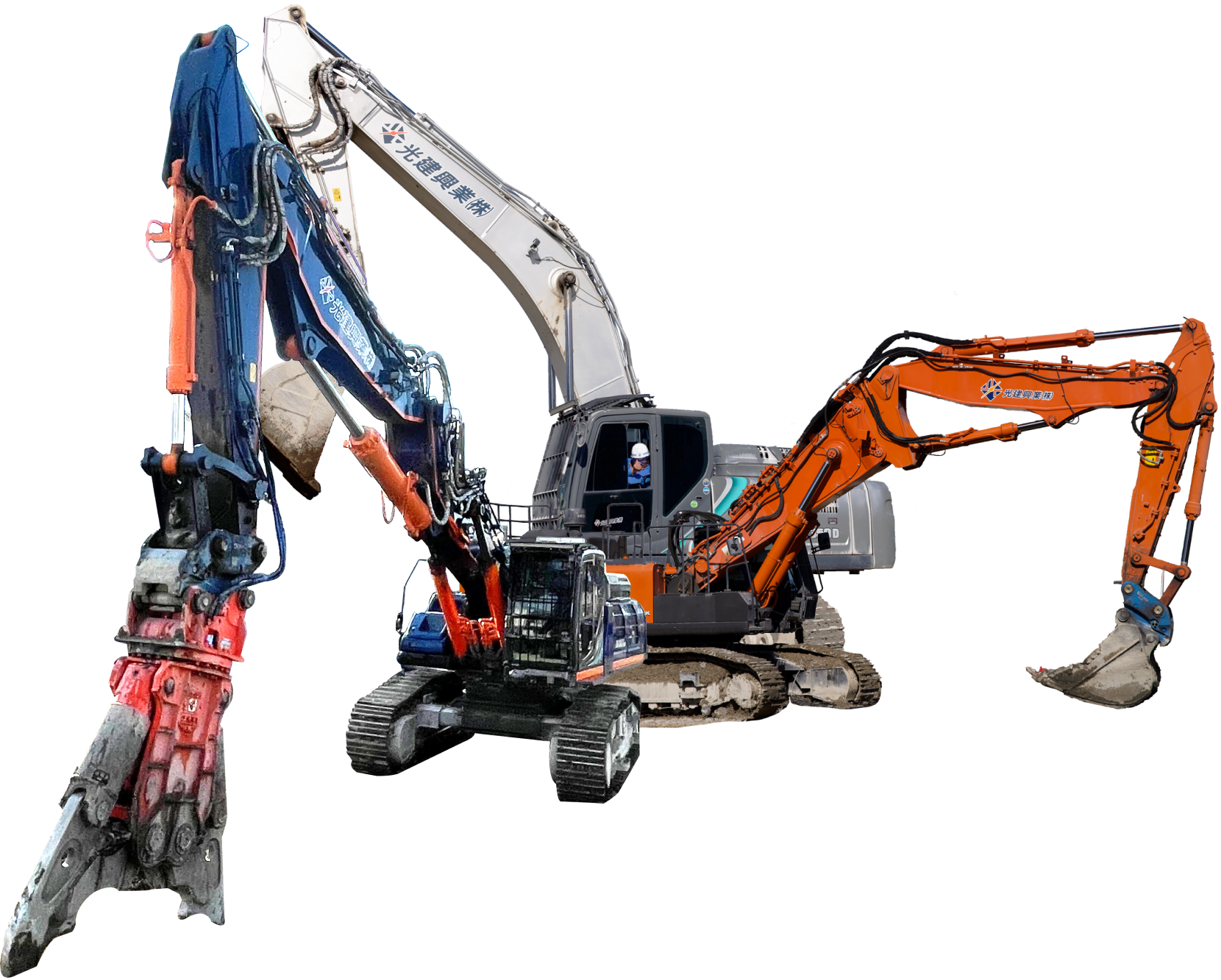Demolition Flow
I will do everything professionally.

We execute each and every job with the safety of our customers and neighbors in mind. We have liability insurance (third-party liability insurance) for construction work in the event that something should happen, which should not. Please feel free to contact us for a free estimate.
After hearing your detailed requests, we can calculate a clear demolition cost by surveying the road conditions and removing items other than houses and buildings. We will discuss underground buried objects and unforeseen construction work up to the time of construction, and only after the customer has agreed to the work will we begin construction.
Check the following points
・Check the construction area and the type of curing sheet.
・Check the structure and condition of the building.
・Confirmation of the neighborhood environment and delivery route.
・Confirmation of construction details
・Confirmation of boundaries with neighbors Confirmation of underground objects
・Confirmation of underground objects
・Preference after land preparation
We can also arrange for rituals if you wish.
In this process, curing sheets and soundproofing sheets are covered to prevent noise and dust, and to minimize inconvenience to the neighbors.
Folding, sash, insulation, fittings, roof tiles, interior molding, house equipment, plasterboard, interior walls (decorative panels)
We will also pay close attention to neighboring blocks and other objects not subject to demolition.
Once the demolition and removal of the foundation is complete, the land is carefully cleared and leveled.
*Clearing the land after demolition
After demolition, if the site is to be used as a parking lot, we will lay crushed stone or pave it with concrete or asphalt.
Upon request, we will provide you with a construction manifest that visualizes the process, including who used which company to transport the materials.
